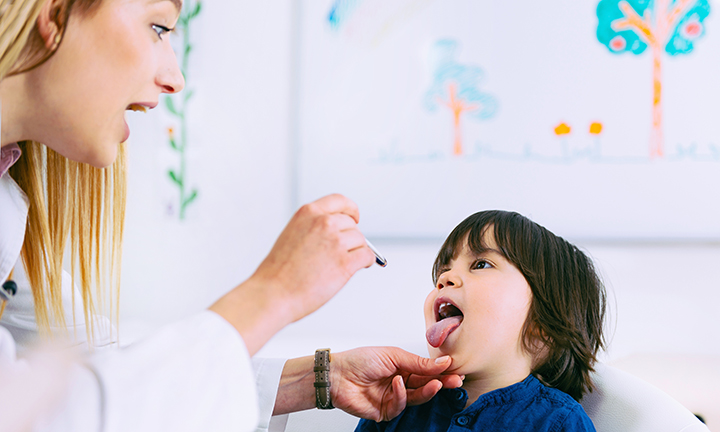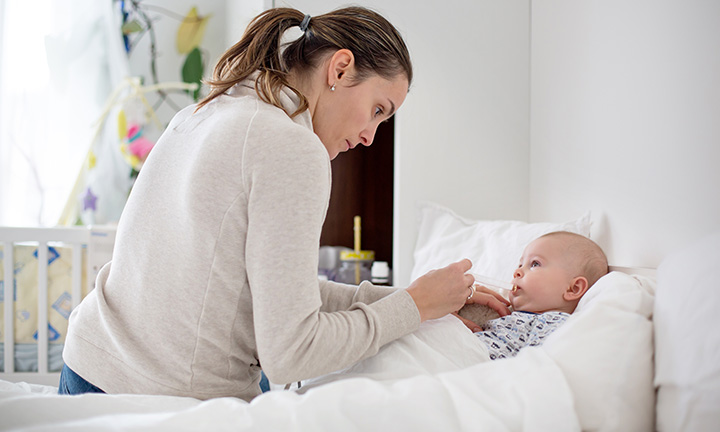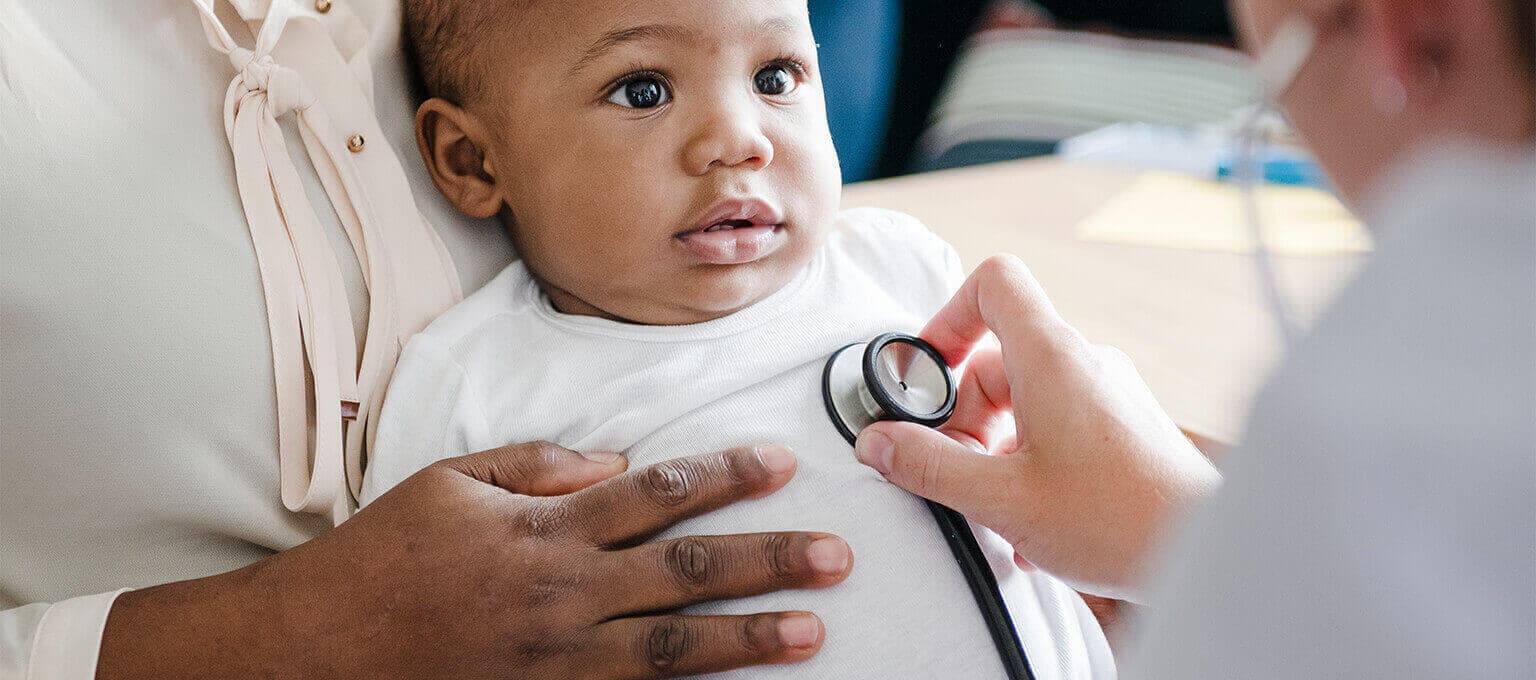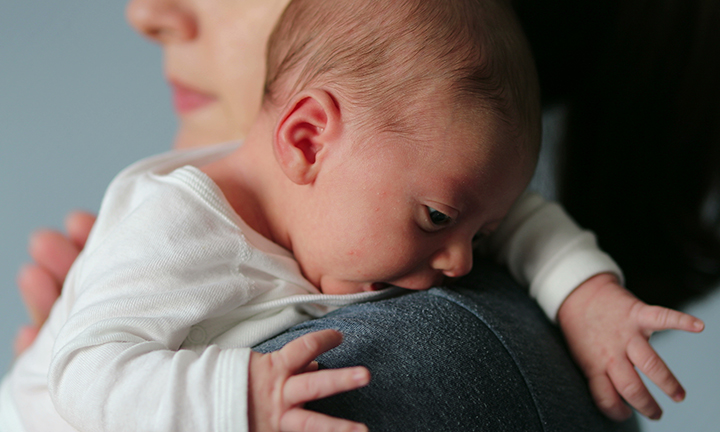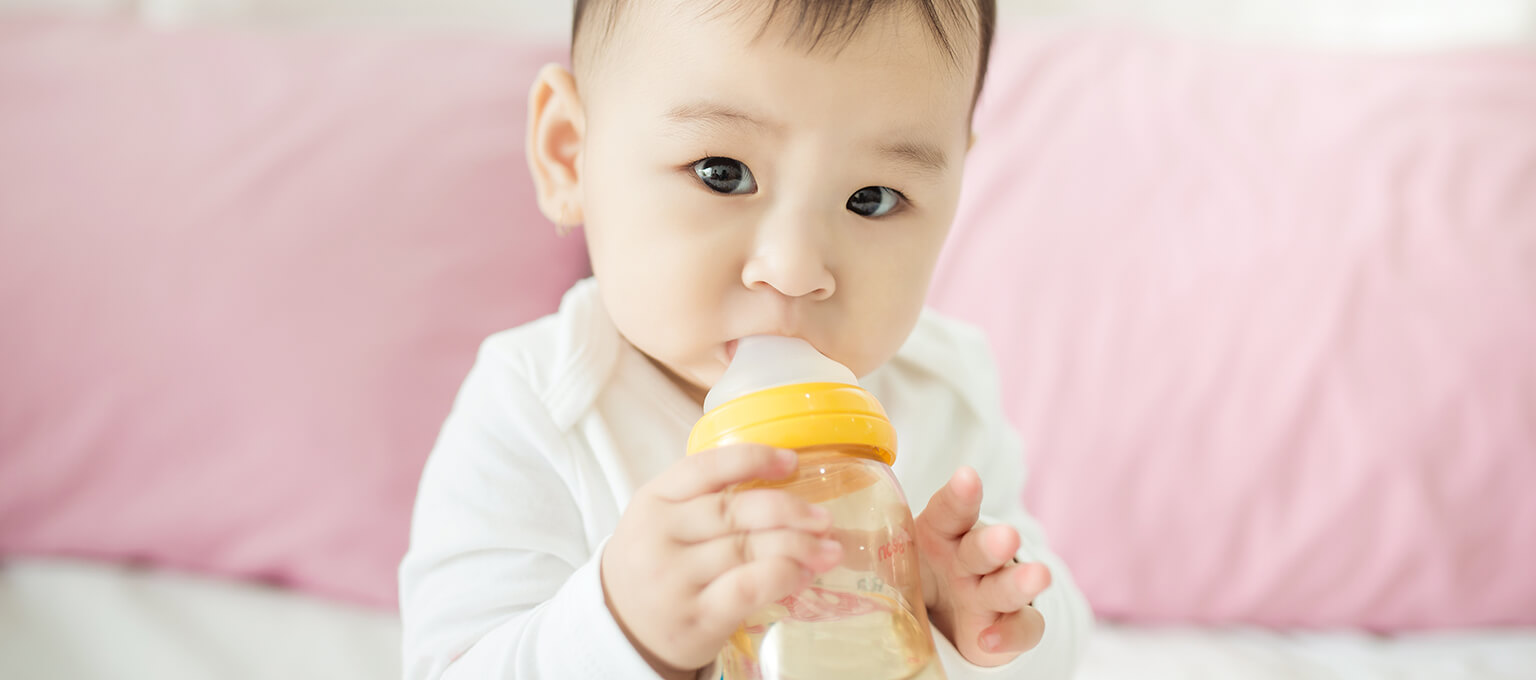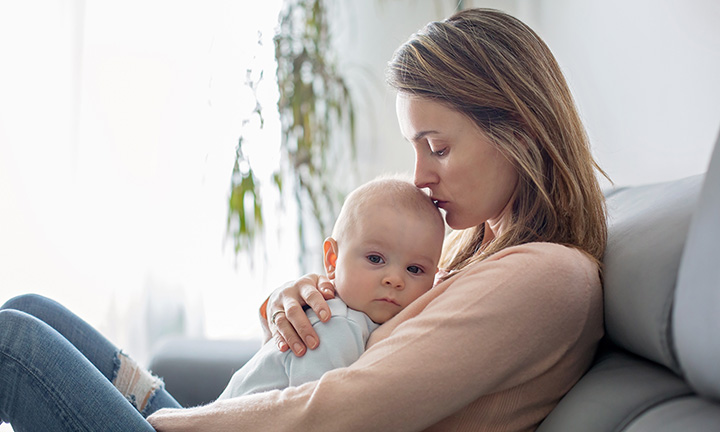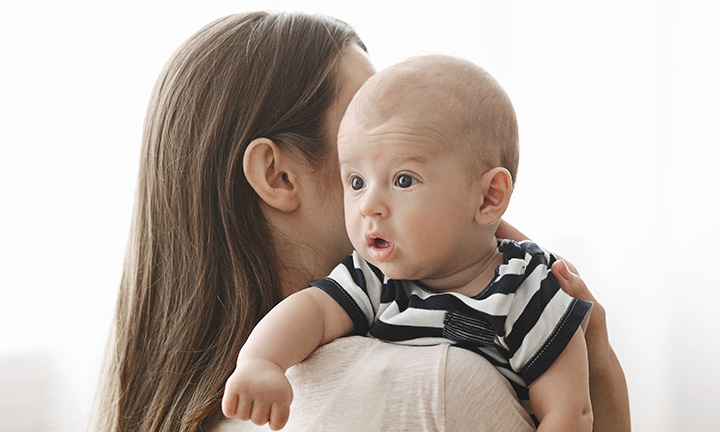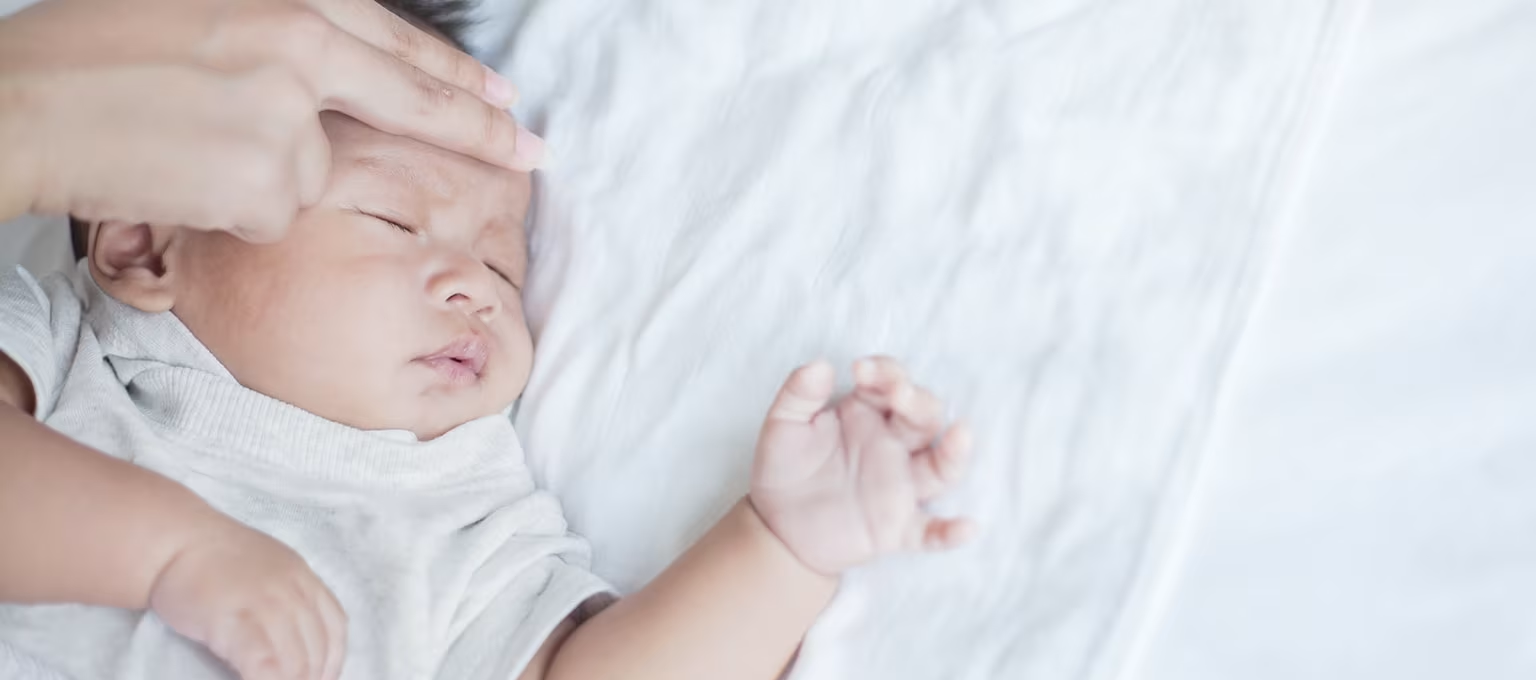
Whooping Cough in Babies
You might think that whooping cough in babies is one of those childhood illnesses that disappeared decades ago. Unfortunately, it's still quite common and has been on the rise since the 1980s. Babies younger than 6 months who haven't had all of their immunizations are the most at-risk group. Luckily, there are vaccines that help prevent the infection. Keep reading to discover what whooping cough is all about. Learn the signs of pertussis in babies, how it sounds, the treatment options available, and how you can protect your little one.
What Is Whooping Cough?
Whooping cough, also known as pertussis, is a bacterial infection in the respiratory system caused by the Bordetella pertussis bacteria. The upper respiratory system is lined with cilia—tiny hair-like cells that aid in breathing. Pertussis attaches to the cilia, causing inflammation and making it very difficult to breathe.
Although people of any age can get whooping cough, it's most dangerous in babies because one of the symptoms—a whooping-sounding cough—isn't always noticeable. Instead, if your baby has whooping cough, they might experience apnea, a pause in the normal breathing pattern that can make it hard to breathe and cause their face to redden or turn blue.
About half of babies younger than 1 year old who get whooping cough need to be hospitalized because of the risk of complications. Tragically, some babies die from whooping cough, making prevention crucial. Try not to let this statistic scare you. Instead, consider this: It's important to be aware of this condition, stay watchful, and—most importantly—get vaccinated.
Preventing Whooping Cough With the Vaccine
The best way to prevent whooping cough is vaccination. Experts recommend everyone get this vaccine.
There are two types of whooping cough vaccines: DTaP for children younger than 7 years, and Tdap for everyone else. Both shots also vaccinate against diphtheria and tetanus.
Whooping Cough Vaccine Doses
As part of your little one's overall immunization schedule, experts recommend five doses of the whooping cough vaccine at these ages:
Since your baby can't receive the first DTaP vaccination until they're 2 months old, your healthcare provider will usually encourage expectant parents to get the whooping cough vaccine during pregnancy, usually in the third trimester. This enables you to pass on antibodies to your baby, which will protect them from the illness in the first few months of life.
About four out of five babies who come down with whooping cough catch it from someone at home. That's why it's so important that everyone in your household and anyone who will be in contact with your baby, such as a babysitter, grandparents, and extended family, also get vaccinated if they haven't already done so. A booster is needed every 10 years, so make sure everyone is current with their vaccinations.
Whooping Cough Symptoms
The signs of pertussis in babies start to appear about 5 to 10 days after infection, but in some cases, it might take as many as three weeks for symptoms to show.
Experts sometimes group the symptoms of whooping cough into three stages:
What to Do if You Suspect Your Baby Has Whooping Cough
Early detection of whooping cough in babies is crucial because treatment with antibiotics can reduce the severity of symptoms. Call your healthcare provider if you think your baby or a member of your immediate family has come in contact with someone who is infected, or if your baby has any of these symptoms:
Whether your baby is 3 months old or 7 months old, whooping cough can be serious and requires immediate medical attention. There is a higher risk of complications associated with whooping cough if your baby is under 6 months old, so your baby's healthcare provider may recommend hospitalization to decrease your little one's risk of:
If your baby needs to be hospitalized, they will be monitored closely. Your little one may have respiratory discharge suctioned, be given oxygen and intravenous fluids, and be isolated to ensure the infection doesn't spread to others. Your baby will be in good hands in the hospital, where this type of specialized treatment will promote a speedy recovery.
Whooping Cough Diagnosis
To diagnose whooping cough, the healthcare provider will conduct a physical examination and take a swab of mucus from your baby's nose or collect a sample by flushing the nose and back of the throat with saline. The sample will be tested in a laboratory for the presence of the Bordetella pertussis bacteria.
How to Treat Whooping Cough at Home
If your baby is ill with whooping cough and the healthcare provider has determined that they don't need hospitalization, you can provide home care similar to the care you would offer for a common childhood illness like a cold, but with some extra steps and precautions:
How Does Whooping Cough Spread?
The pertussis bacteria can be found in saliva and mucus, so whooping cough spreads when an infected person coughs, sneezes, or even laughs.
If someone in your home has whooping cough, make sure all family members practice good handwashing to help prevent its spread.
The incubation period—the period between infection and when symptoms appear—is about 5 to 21 days. The contagious period starts before symptoms appear and lasts for as long as two weeks after coughing begins. Treatment with antibiotics can help shorten the contagious period.
Rare Side Effects of the Whooping Cough Vaccine
It's very rare for your baby to experience any side effects from the whooping cough vaccine. In some cases, side effects do occur but are very mild. These may include fever, vomiting, redness, swelling, or pain around the spot where the needle went in. More serious side effects, which are even rarer, may include a fever higher than 105 degrees, nonstop crying for hours, or seizures. See your healthcare provider immediately if any of these side effects occur in your child after vaccination.
FAQS AT A GLANCE
The three stages of whooping cough are:
- First stage. Symptoms similar to that of the common cold.
- Second stage. Cough with a whooping sound and other symptoms such as vomiting and exhaustion.
- Third stage. Slow recovery as coughing fits become less frequent and milder.
The Bottom Line
Whooping cough isn't something to take lightly, but it can be prevented if both you and your child are vaccinated according to your healthcare provider's recommendations. Simply following your provider's immunization schedule will give you lots of peace of mind and help ensure your baby's happy and healthy development.
To earn Pampers Cash for all your diaper purchases, be sure to download the Pampers Rewards App today.
- CDC. “Diphtheria, Tetanus, and Whooping Cough Vaccination: What Everyone Should Know.”
- CDC. Tdap Vaccination for Pregnant People
- CDC. Symptoms of Whooping Cough: Complications
- CDC. Treatment of Whooping Cough
- CDC. Whooping Cough Vaccination
- CDC. Vaccinating Pregnant Patients
- CDC. Symptoms of Whooping Cough
- Cleveland Clinic. “Whooping Cough (Pertussis).”
- Mayo Clinic. “Whooping Cough.”
- Mayo Clinic. “Symptoms and Causes.”
Read more about Baby
Related Articles
Join a World of Support
through Pregnancy and Parenthood.
TRACK WITH TOOLS
LEARN WITH EXPERTS
GET REWARDED



